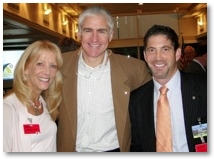
Jenny Andrews, Alex Rule & Steve Goldfarb
Past Presidents Steve Goldfarb and Jenny Andrews led the way Friday, with Steve giving the invocation and pledge and Jenny welcoming our visiting Rotarians and guests.

|
• BBRC WEEKLY NEWSLETTER • VOL 23, NO 16, OCTOBER 19, 2010 • |
|
IN THIS ISSUE
"Success by Design! The Business Life Cycle of a Major Golf Tournament: The 2010 US Senior Open," Chris Falco, General Chairman (CEO) of the 2010 US Senior Open and CPA, Partner with Falco Sult & Company PS | Invocation, Pledge and Intros | 25th Silver Anniversary Dinner | Rotary First Harvest Fund Raiser—the Cabernet Classic | 2011 BBRC Retreat | Sergeant At Arms | Other Potpourri | Tips for Publishing Photos in the Reveille or on the BBRC Website | Web Fun
THIS WEEK
"The Future of News Media," George Erb, Editor in Chief, Puget Sound Business Journal, will share his thoughts and insights on the rapid evolution of news media. He will explain how the Business Journal is adjusting its operations and priorities to take advantage of shifting media technology and consumption habits. The aim: to be the most relevant, useful resource for business leaders in the region. [Holert]
THOUGHT FOR THE WEEK
"If you break 100 watch your golf. If you break 80, watch your business." ~ Businessman and comedian Joey Adams

Jenny Andrews, Alex Rule & Steve Goldfarb
Past Presidents Steve Goldfarb and Jenny Andrews led the way Friday, with Steve giving the invocation and pledge and Jenny welcoming our visiting Rotarians and guests.
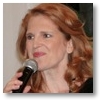
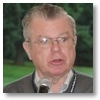
Wendi Fischer & Bob Moloney
Wendi Fischer, on behalf of the Fellowship Committee, reminded the members that our Silver Anniversary Dinner will be held November 12th at Trilogy.
Past President Bob Moloney followed up with the second installment of BBRC history. Last week, Dick Brown summarized the first ten years. This week, Bob summarized the second ten. Here are the highlights:
Bob closed by reflecting on how the BBRC's second decade was just an indicator of more good things to come, and how we have become a great example for other Rotary clubs throughout our district. Bob said we can measure our successes by the amount of money we have raised as well as the lifelong friendships we have formed in our quest for "service above self."
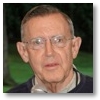
Howard Johnson
Howard Johnson reminded our club that the Rotary First Harvest "Cabernet Classic" will be Wednesday, October 20th, in Seattle. Over 40 winemakers will be represented, with great auction and raffle items. Tickets are $50, and you can order them on the RFH website or at the door.
Let's have the BBRC adequately represented in one of the most important Rotary-related community service organizations in our District.
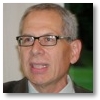
John Martinka
President-elect John Martinka reminded us that we are "retreating" to LaConner this coming March 18th and 19th for our annual planning weekend. More news will follow, but mark your calendars now for this important and fun event.

SAA Elena Howell
Sergeant At Arms Elena Howell announced that over 85% of the club has signed up on the new DaCdb database. If you haven't done that yet, you need to soon, so that you will avoid the wrath of the Spider Monkey.
Speaking of the Spider Monkey, Boston University alum Sayoko Kuwahara was fined by the current Sergeant At Arms for appearing in her alma mater's magazine without a visible Rotary pin.
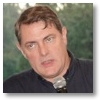
John DeWater
John Dewater announced the Oktoberfest party at Lawrence the Florist Saturday at 5:30, with plenty of beer and brats.

Sayoko Kuwahara
Sayoko said that the website is now closed for comments for the late BBRC member, John Armenia, but we can still accept donations funds for scholarships in his name.
1. Set your camera to take photos at a LARGE size, e.g., 3K pixels wide. Photo will be approximately 2MB—3MB each.
2. Take all photos in LANDSCAPE. Do not turn your camera for a vertical or portrait shot.
3. DO NOT EDIT OR CROP photos before sending them for publication. Send the original files, as is.
4. DO NOT EMBED your .jpg files in any documents, e.g., Microsoft Word, Publisher. Send the original files, as is.

Chris Falco
Tim Johnstone provided the intro of our guest speaker, the man who led five years of planning for a two-week event with overwhelming success. Tim baited the crowd by stating that our speaker got a couple thousand volunteers to PAY for the privilege of volunteering. How did he do that?
The 2010 Seniors Tournament
Guest speaker Chris Falco outlined the business model for a concept that took root in 2005 and ramped up on 2007. In the summer of 2010, the years of planning paid off with a tournament that exceeded all expectations.
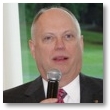
Tim Johnstone makes the introduction
Chris asked how many Rotarians had run a charity golf tournament. Many of us looked at each other and smirked. Then he said, "Running this kind of tournament is a business on steroids — it is 600 times more complicated than a charity golf tournament. Over the next 20 minutes, Chris gave a compelling testimony that proved his claim was no exaggeration. This tournament was "success by design."
Like any business development plan, this venture had phases:
In the Seed Phase, he outlined the following tasks:
Chris demonstrated the need to attend every meeting: because he missed one critical developmental meeting, he returned to discover he had been selected as CEO. Lesson 1: Don't miss meetings.
An executive team was formed to lead the project. Nine members were chosen from the club to serve as a steering committee, plus a five member professional team. Together, they developed a plan that culminated in a $5 million budget for a one week tournament.
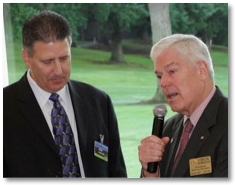
President Chuck Kimbrough thanks Chris Falco for his program.
The leadership appointed 30 middle managers to lead. There were going to be over 1,700 volunteers on the course at any given time, working four shifts of four hours each.
There were many challenges. First, golf pros are quirky, and many require significant care and feeding, not unlike the egos of rock stars. Second, the course itself was a challenge: the setup of the course was in place two full years before the date of the tournament. Sahalee is narrow, with lots of trees – so narrow that many pros mockingly referred to it as Sa-Hallway.
Honorary chairperson was local Seattle boy Fred Couples. This was to be his first major senior event, or "senior moment." (Editor's note: I can't remember my first senior moment.)
Research required attending three other senior tournaments and two US Opens, just to study the logistics and choreography.
Start-Up Phase:
The team began by going after institutional money. The Seattle market had many aspects that were different from other major markets. The challenge became even more difficult after the recession hit: corporate money dried up. Four banks had already committed, and then they backed out: $400,000 in corporate support out the door. It was a tough sell after that.
Growth Phase: 2009
In this phase, the team focused on the following tasks:
This event brought $30M to the area. Everyone involved wanted to be your partner, not just a contributor. Marymoor Park, for example, wanted $180,000 for the week to park cars. Serious negotiations eventually got them down to $84,000. The homeowners association was even more difficult to deal with.
Of the tickets to be sold for the event, 95% would be over the internet. In the end, over $1.4 million of ticket sales occurred.
Established Phase: 2010
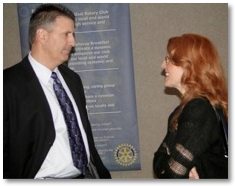
Chris Falco & Wendi Fischer
This phase was the ramp-up to the big event. Coordination and execution required amazing feats. For example, the big leaderboard physically took up one entire semi-truck to transport to the course. Over 8,000 portable grandstand seats had to be imported and assembled. The flooring for the merchandise tents and trophy areas alone was 8,000 square feet. In Sahalee Village, a media center had to accommodate over 150 people, along with their radio and television hook-ups and press conference areas.
The Employee Development Committee had to plan for distribution of uniforms to 2,700 people in two days, plus all of the training. It took a gymnasium to seat the 1,200 marshals for their special training.
Mature Phase:
In this phase, the budgeting preparation, and testing continued. They even had "practice parties" to study the flow and timing, so they would get it right for the real thing. (Editor's note: Where do I sign up for practicing partying until I get it right?) The cart barn had hook-ups for over 100 staff electric golf carts. By the way, all the power for the entire event was supplied by portable generators, which had to be planned, acquired, and delivered, just like everything else.
Exit Phase: "And they all lived happily ever after."
In sum, our guest, in an entertaining and articulate presentation, demonstrated that planning and executing a PGA style of golf tournament is analogous to leading the normal lifecycle of any major business, just compressed into a tiny fraction of the time.
The Gospel According to St. Titleist
Courtesy of Wally Mahoney
1. Eighteen holes of match play will teach you more about your foe than 18 years of dealing with him across a desk. ~ Grantland Rice
2. Golf appeals to the idiot in us and the child. Just how childlike golf players become is proven by their frequent inability to count past five. ~ John Updike
3. It is almost impossible to remember how tragic a place the world is when one is playing golf. ~ Robert Lynd
4. If profanity had any influence on the flight of the ball, the game of golf would be played far better than it is. ~ Horace G. Hutchinson
5. They say golf is like life, but don't believe them. Golf is more complicated than that. ~ Gardner Dickinson
6. If a lot of people gripped a knife and fork as poorly as they do a golf club, they'd starve to death. ~ Sam Snead
7. Golf is a day spent in a round of strenuous idleness. ~ William Wordsworth
8. If you drink, don't drive. Don't even putt. ~ Dean Martin
9. If you are going to throw a club, it is important to throw it ahead of you, down the fairway, so you don't have to waste energy going back to pick it up. ~ Tommy Bolt
10. Man blames fate for all other accidents, but feels personally responsible when he makes a hole-in-one. ~ Bishop Sheen
11. I don't say my golf game is bad, but if I grew tomatoes, they'd come up sliced. ~ Arnold Palmer
12. My handicap? Woods and irons. ~ Chris Codiroli
13. The ardent golfer would play Mount Everest if somebody would put a flag stick on top. ~ Pete Dye
14. I'm hitting the woods just great, but having a terrible time getting out of them. ~ Buddy Hackett
15. The only time my prayers are never answered is playing golf. ~ Billy Graham
16. If you think it's hard to meet new people, try picking up the wrong golf ball. ~ Jack Lemmon
17. It's good sportsmanship to not pick up lost golf balls while they are still rolling. ~ Mark Twain
18. Don't play too much golf. Two rounds a day are plenty. ~ Harry Vardon
19. Golf and sex are the only things you can enjoy without being good at either of them. ~ Jimmy DeMaret
20. If I hit it right, it's a slice. If I hit it left, it's a hook. If I hit it straight, it's a miracle. ~ All Us Hackers
21. Golf is a game invented by the same people who think music comes out of a bagpipe. ~ Lee Trevino